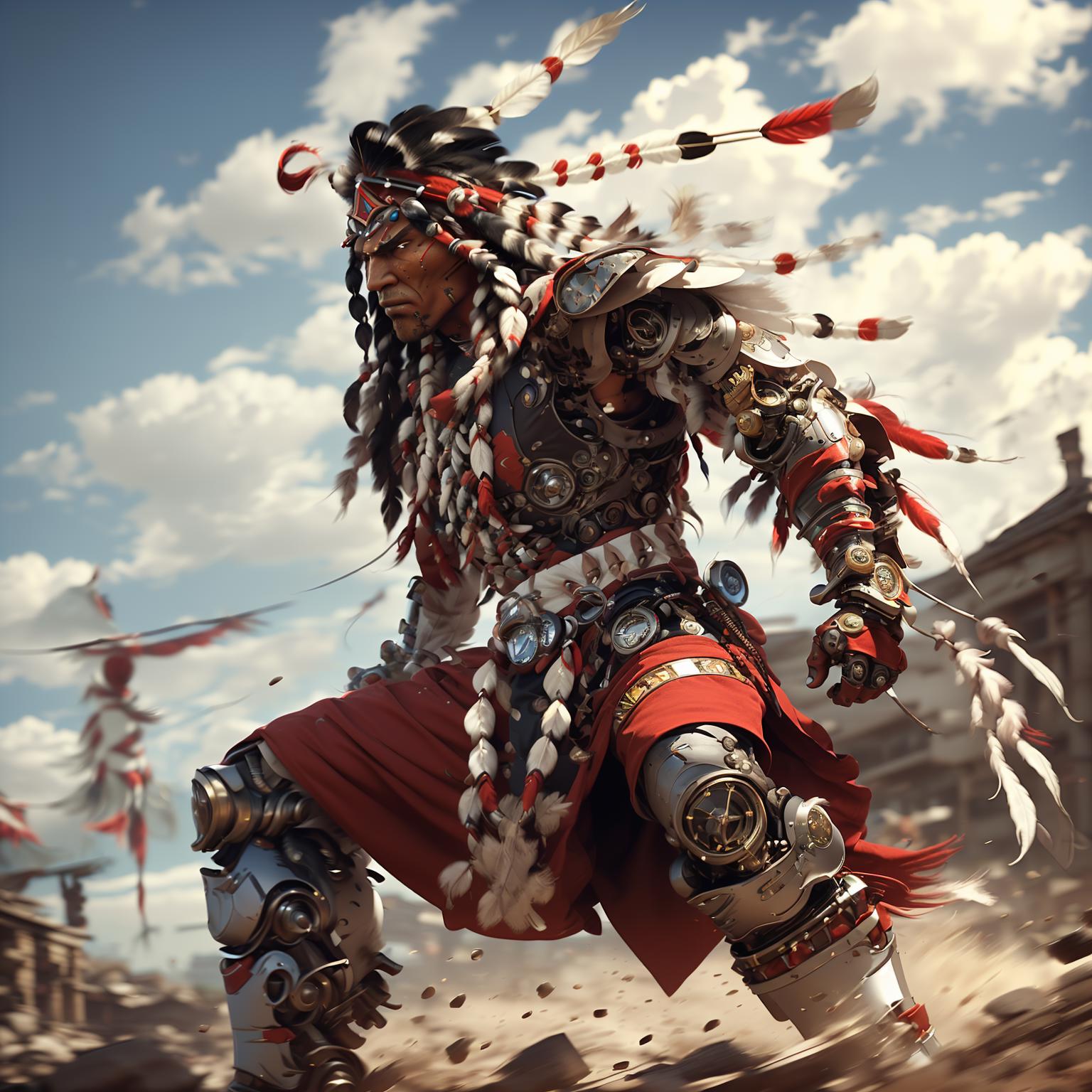Traditional Cherokee Art Of The North American Warriors
Explore the traditional Cherokee art of the North American warriors. Discover the cultural significance, artistic techniques, and historical context behind these powerful expressions of heritage and bravery.

Aug 07, 2024
The Cherokee people, native to the southeastern United States, have a rich cultural heritage that includes a profound tradition of art. Among the various forms of Cherokee art, the art associated with the North American warriors holds a special place. This art is not only a reflection of their bravery and skill in battle but also a testament to their deep connection to their heritage and spirituality.
The Cultural Significance Of Cherokee Warrior Art
Cherokee warrior art is deeply embedded in the tribe's cultural fabric. These artworks were more than mere decorations; they held significant meaning and served various purposes.
Key Points:
- Spiritual Connection: Warrior art often depicted spiritual symbols and deities, reflecting the warriors' beliefs and the guidance they sought from their ancestors.
- Status and Identity: The art helped in identifying a warrior's clan, status, and achievements. Each design and symbol had a specific meaning.
- Communication: The art was a medium to convey messages, record histories, and pass down traditions from one generation to the next.
Common Themes In Cherokee Warrior Art
Several recurring themes can be found in traditional Cherokee warrior art, each carrying its unique significance.
Key Themes:
- Nature: Depictions of animals, plants, and celestial bodies highlight the deep respect the Cherokee have for nature and its elements.
- War and Peace: Scenes of battles and peace treaties were common, illustrating the dual aspects of a warrior's life.
- Mythology and Legends: Stories of mythical creatures, legendary heroes, and significant historical events were immortalized in their art.
Materials And Techniques
The materials and techniques used in creating Cherokee warrior art were as diverse as the artworks themselves. Traditional methods have been passed down through generations, preserving the authenticity of this cultural heritage.
Key Materials:
- Natural Pigments: Colors were derived from plants, minerals, and other natural sources, providing a vibrant yet earthy palette.
- Wood and Stone: Carvings on wood and stone were common, used to create totems, masks, and other ceremonial objects.
- Textiles: Beadwork and weaving were integral, often used to adorn clothing, headdresses, and weapons.
Key Techniques:
- Carving: Detailed carvings in wood and stone depicted intricate designs and symbols.
- Beadwork: Elaborate patterns created with beads were sewn onto garments and accessories.
- Painting: Using natural pigments, artists painted on various surfaces to create visually striking pieces.
Notable Artifacts And Their Meanings
Many notable artifacts from Cherokee warrior art have been preserved and studied, each telling a unique story about the people and their way of life.
Key Artifacts:
- War Shields: Decorated with symbols of protection and power, these shields were both functional and symbolic.
- Ceremonial Masks: Used in rituals, these masks often depicted spirits or animals and were believed to hold spiritual power.
- Weaponry: Bows, arrows, and clubs were not only tools of war but also canvases for artistic expression.
FAQs
What Is The Significance Of Animal Symbols In Cherokee Warrior Art?
Animal symbols in Cherokee warrior art often represent specific traits or deities. For example, the eagle symbolizes courage and strength, while the turtle may represent longevity and endurance.
How Did Cherokee Warriors Use Art In Their Daily Lives?
Cherokee warriors incorporated art into their daily lives through their clothing, weapons, and personal items. Art served as a way to express their identity, beliefs, and achievements.
Are Traditional Cherokee Art Techniques Still Used Today?
Yes, many traditional Cherokee art techniques are still practiced today. Contemporary Cherokee artists continue to use these methods, preserving their heritage while also infusing modern elements.
How Were Natural Materials Used In Cherokee Warrior Art?
Natural materials such as wood, stone, and natural pigments were used extensively. These materials were chosen for their availability and spiritual significance, and they were crafted with great skill to create lasting artworks.
What Role Did Storytelling Play In Cherokee Warrior Art?
Storytelling was a crucial aspect of Cherokee warrior art. Artworks often depicted scenes from legends, historical events, and personal stories, serving as visual narratives that preserved the tribe's history and culture.
Conclusion
The traditional Cherokee art of the North American warriorsis a profound expression of cultural identity, spirituality, and history. Through their intricate designs, meaningful symbols, and masterful techniques, Cherokee artists have created a lasting legacy that continues to inspire and educate. This art form not only celebrates the bravery and skill of the warriors but also keeps the rich cultural heritage of the Cherokee people alive for future generations.